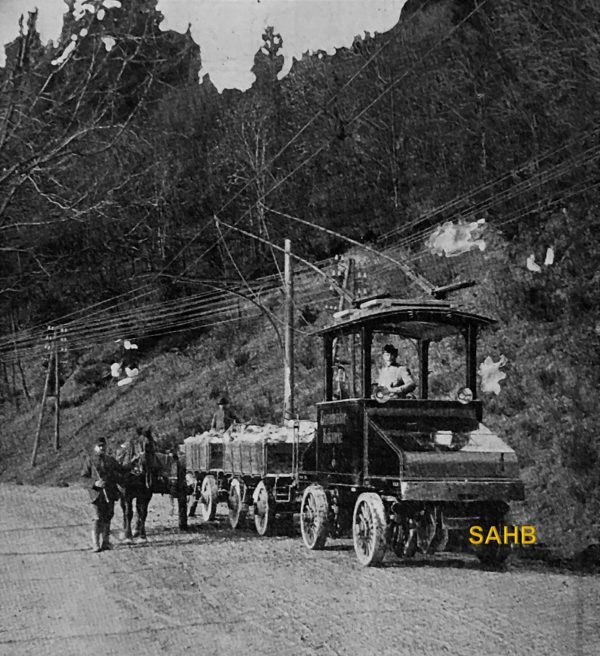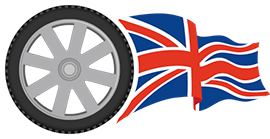
In the Biela valley near Dresden a successful trial was underway in 1903 with the Schiemann system. It was claimed to make massive savings in investment in comparison with conventional tramways that required dedicated tracks.
This was one of the world’s first trolley systems. It was built and operated by Dresden native Max Schiemann, who is credited with the innovation of collecting current from two horizontally parallel overhead wires. The first system, started in July 1901, initially covered about two miles, linking the town of Königstein with the village of Hütten. The line ultimately spanned 2.7 miles after being extended from Hütten to the town of Königsbrunn.
The service was popularly known as Gleislose Bahn (trackless railway), but its full name was Gleislose Bielathal-Motorbahn mit elektrischer Oberleitung (Trackless Biela Valley Motor Line with Electric Overhead Cable). While the system remained in operation until only September 1904, it is still remembered today for its pioneering role in public transport history.
Schiemann’s firm was Die Gesellschaft für gleislose Bahnen Max Schiemann & Co., based in the town of Wurzen in Saxony. It existed from 1901 to 1911. Schiemann previously worked as an engineer at Siemens & Halske. He succeeded in adapting the tramway pole system, which was relatively safe when drawing power, to the needs of road vehicles. The system is still in use today.
The various overhead line vehicles and systems were built by Siemens & Halske under the name “Schiemann System” and were built for passenger, freight and mail vehicles. An interesting quirk of the vehicle in our Snapshot was that it was bi-directional – but whether steering was through all four wheels is unknown. Vehicles could deviate three metres from the overhead line on both sides. Some models had four-wheel drive, and braking was not just by mechanical brakes: short-circuit and reverse-current was also used. Schiemann built a total of twelve systems, four of which were only operated for pure goods traffic.
Most of the routes only existed for a few years, closed as a result of technical problems, low passenger numbers, the poor quality of the roads at the time and the First World War (the overhead lines were dismantled in many places to obtain the copper urgently needed in the armaments industry). The penultimate Schiemann trackless railway was in Wurzen and closed in 1929. Only the Altona harbour-side tug hung on until 1949.
After the First World War Schiemann became active in Great Britain, where the potential for the expansion of trolleybus construction was most promising. He worked for the London-based Railless Electric Traction Company Ltd., established in 1908, which was at the forefront of the introduction of trolleybuses to Britain.
Photo courtesy of The Richard Roberts Archive: www.richardrobertsarchive.org.uk







Leave a Comment